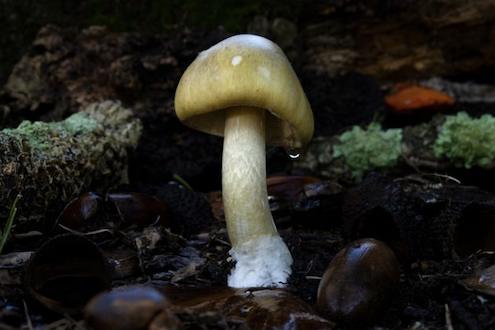Erin Patterson’s mushroom murders initially drew Emmy-nominated director Gil Marsden in for the same reasons they captured global attention — the mystery, the headlines and the bizarre circumstances. But the decision to pursue a long-form documentary series was shaped by something deeper: a desire to show how a small town grapples with trauma when thrust into the international spotlight.
On July 29, 2023, Patterson poisoned four of her relatives during a planned lunch in the Victorian town of Leongatha, using highly toxic death cap mushrooms. Three of the guests — her in-laws Don and Gail Patterson, and Gail’s sister Heather Wilkinson — died within days. Heather’s husband Ian survived, despite a serious hospitalisation.
On July 7, 2025, a jury in the Supreme Court of Victoria convicted Patterson of three counts of murder and one of attempted murder. Two months later, she received three life sentences for the murders, alongside a 25-year sentence for Ian Wilkinson’s attempted murder, to be served concurrently.
“This trauma has a comma on it as of yesterday, but it’s ongoing. Hopefully… there’s a bit of peace and respite for the family and the town,” Marsden told Variety AU/NZ about the sentencing.
While part one of his Stan series, “Revealed – Death Cap Murders,” which premiered on September 14, focused on Patterson herself, Marsden stresses that the project was never just about one woman.
“When you’re doing documentary, the most important thing is to make sure that you have a perspective and a point of view that you want to use to frame the project,” he explained. “For us, that was really all about bearing witness to this trauma and this tragedy, and not taking the easy way out by just saying one person’s to blame. This is about what happens when an entire community is suddenly forced to carry the weight of an international story they never asked for.”
Marsden recalled his early days in the town, walking along the main street, spotting a cameraman with a gimbal doing a tracking shot, while a journalist from Al Jazeera conducted a live cross in another language. The sudden transformation from local to global was irresistible to him.
“This story had echoes of the Lindy Chamberlain saga,” Marsden said, referring to the infamous 1980s case that drew worldwide attention to a small Northern Territory town. “It was fascinating to see how crime is consumed in the digital age, and how a small community navigates that.”
The tension between private grief and public fascination was enormous, and at the heart of Marsden’s approach was the perspective of those living through it. Building that perspective, however, required trust.
“We were incredibly transparent with the community,” he said. “We set a couple of rules for ourselves, like we were never going to film people who didn’t want to be filmed. We never did it without permission. Documentary is an interesting form, because to use someone’s story, you need them to sit in a chair. Those early conversations, me going down there without a camera and spending months talking to people, were critical in building trust.”
He added that the challenges of documentary filmmaking, from timing to access, ultimately worked in the team’s favour. “Once you build that trust, it’s about executing and making sure you don’t violate it — whether that’s with community members, journalists, or police. That was critical all the way through.”
Marsden also rejected the notion that documentaries must break new facts to succeed.
“We’re not competing with the journalists on the ground,” he said. “Their job is to report the facts as they emerge. Ours is to take a step back and give audiences a way to experience the story. It’s about pacing, about colour, about painting a picture of what it felt like to live through this.”
At the centre of that experience is still the unanswered question: why? “With Erin Patterson, we know the who, what, where, and how,” Marsden said. “The why remains. And I think that’s what people keep coming back for.
“People like true crime because they like to look into darkness from a distance. We like to have some safety between us and the monsters, to look into that world and try to put the puzzle together. But I think the reason this story has had such lasting impact is because those answers are nowhere to be found.”
Ultimately, for Marsden, the goal was never just telling a crime story — it was bearing witness to a community and its resilience.
“If audiences come away with a deeper understanding of the town, of the families, and of what it feels like to be thrust into this kind of global attention, then I think we’ve done our job,” he said.































